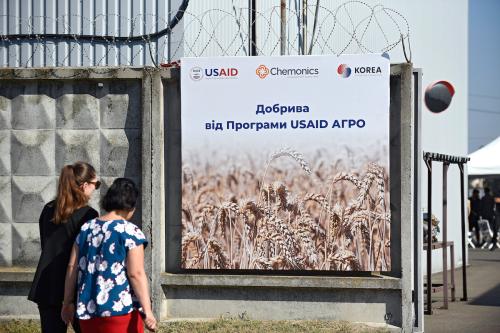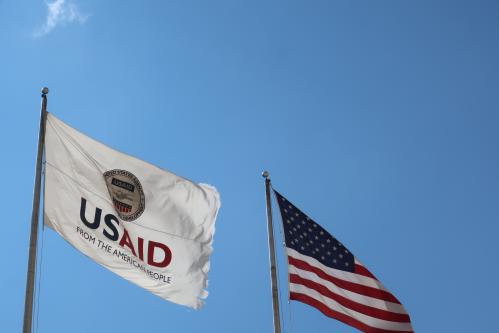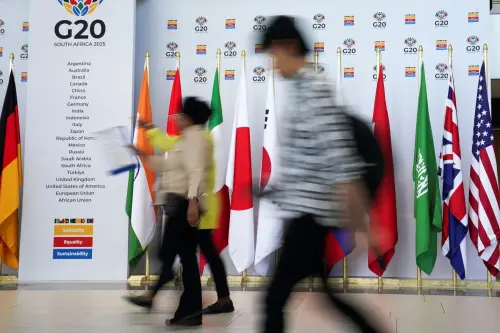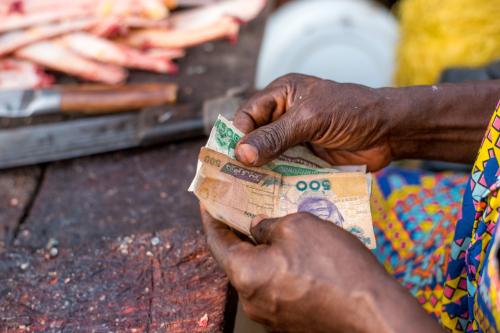Localization, the current shorthand for how to make development work more locally led, is one of the most enduring policy objectives for the U.S. Agency for International Development (USAID). Espoused by both Republican and Democratic administrations, it traces back at least to the Clinton administration’s endorsement of the principle of country ownership in the Millennium Development Goals (MDGs) in 2000 and continued with the Bush administration’s signing the 2005 Paris Declaration on Aid Effectiveness. While terms have changed over the years—USAID has called for “local solution,” a “journey to self-reliance,” and now, “locally led development”—the objective has remained the same: to channel more foreign assistance directly to homegrown institutions in developing countries.
It is striking just how resilient—and illusive—this policy objective is. At a time when there is little consensus about anything, localization continues to enjoy bipartisan support. Some on the left see it as essential to sustainable development and a way to decolonize aid, while some on the right see it as a step toward dismantling the foreign aid industry, increasing cost-effectiveness, and reducing aid handouts. So, if everyone agrees localization is the way to go, why, in the words of USAID’s Administrator Samantha Power, is it so hard to meet even modest localization targets?
It is not for lack of trying. Just in the last three years, USAID has articulated a localization vision, updated its risk appetite statement, issued new guidance on local capacity strengthening, clarified who counts as local, revised procurement procedures to make it easier to fund local organizations, started tracking a set of 14 good practices that elevate local leadership, and implored its staff to go local. Yet, despite these efforts, between 2021 and 2022 local awards increased only from 7.4% of “eligible funding” to 10.2%. Using a different methodology, the independent organization Publish What You Fund puts funding to local organizations at 5.7%. Whichever methodology is used, USAID will be far from achieving its 25% target when the clock runs out on this administration at the end of the year.
What should be clear by now is that USAID simply is not built to work with local organizations. In trying to do so it faces three issues it has yet to resolve. First, USAID has mostly focused on internal challenges of how to fund local organizations when the major obstacle is external pressure around what USAID funds. Second, the way Congress structures USAID’s appropriations leads it to rely on U.S. intermediaries to provide accountability for taxpayer dollars and results. And third is the comfort of working with longtime partner organizations.
Since USAID is a bilateral agency, its principal counterpart—and the legitimate representative of its partner countries—is the national government (except in special cases, such as Myanmar and Afghanistan, where the United States government does not recognize the legitimacy of the government in power and USAID works only with nonstate actors). And for the most part, partner governments want to address big national needs like building infrastructure, strengthening health and education systems, supporting business development, and fostering a policy environment to sustain and grow a modern economy. Large-scale programs to strengthen systems require organizations, or in USAID-speak, implementing partners (IPs), with sophisticated business systems, specialized expertise, access to working capital, and the know-how to deliver on-time results (regardless of whether the funding instrument is a grant, cooperative agreement, or contract). Part of what makes localization so hard is that few local organizations are equipped to do what partner governments want and what USAID is built and funded to deliver. Moreover, while local organizations are hungry for USAID funding, most do not aspire to be de facto U.S. government contractors. For them, localization means foreign aid grants to pursue their mission, not USAID’s.
Until USAID reconciles what it finances—which generally seeks to align with partner countries’ national development plans and congressional and administration directives—with what local organizations do, changing how it gives out money will not produce the results localization advocates are looking for.
The second problem is the structure of USAID’s operating model. Over 50 years a symbiotic relationship has evolved between USAID and its mostly U.S. implementing partners. This “aid-industrial complex” took root during the Cold War when USAID justified its budget both by the need to project American soft power in the developing world and by claiming that most foreign assistance dollars stayed in the U.S., creating jobs and strengthening American businesses (an old take on the “doing well by doing good” argument). Although this justification fell out of favor in the 2000s as the development community embraced localization, judging by the growth of the aid industry, USAID’s dependence on U.S. implementing partners has only deepened in the 21st century.
USAID outsources program implementation because of the way Congress divides its appropriations between a small pot for operating expenses to run the agency and a much larger allocation to finance programs. Add in congressional and administrative directives and compliance requirements—to guard against misconduct, support a plethora of priorities, and measure and report on results that respond to domestic advocacy groups—and you have an operating model that has come to rely on purpose-built IPs who understand and can manage the complex and risky business of working with the U.S. government.
A feature of the symbiotic relationship between USAID and its U.S. IPs is the way portfolio risk management is outsourced. USAID works in inherently high-risk environments where managing risk is both difficult and costly. By including the costs of risk management in its implementing partners’ negotiated indirect cost rates (NICRAs), USAID is able to use program funds to purchase a kind of “first loss risk insurance” that makes its IPS the first line of defense. This reduces USAID’s exposure to financial losses and provides some insulation from reputational and other types of risk. But this arrangement only works with established IPs who are able to devote substantial expertise and resources to an arduous yearslong process of negotiating and maintaining a NICRA. Over decades, this has enabled USAID’s established IPs to build strong risk management systems customized to USAID’s needs (and paid for by USAID) that provide the agency with significant protection. In contrast, few local organizations qualify for a NICRA and the Code of Federal Regulations (CFR) allows awardees who do not have a NICRA to charge only 10% in indirect costs—far below what would be required to build and operate effective risk management systems.
This means as a mission’s portfolio becomes more local, it has less “risk insurance,” leaving it more exposed to adverse incidents—not due to local partners being inherently riskier than international organizations, but because they are less equipped and resourced to mitigate adverse incidents when they arise. Losing the “risk insurance” international IPs provide places far more operational demands for monitoring compliance, identifying misconduct, and enforcing corrective actions directly on USAID staff who often do not have the expertise or the bandwidth to take on work that was previously outsourced.
Much of the internal resistance to localization arises because USAID’s program managers understand that this is where the rubber hits the road, and they are reluctant to wind up as roadkill.
This increased exposure to risk is a powerful disincentive that no amount of policy statements or procedural tinkering will overcome.
A final factor tilting the playing field in favor of U.S. organizations is the importance of foreign aid as a tool of national power. The wars in Iraq and Afghanistan, the increased frequency of humanitarian crises, and growing competition with China have all underscored the geopolitical importance of humanitarian and development assistance. Former Secretary of Defense Robert Gates has called diplomacy, strategic communications, foreign assistance, civic action, and economic reconstruction essential instruments of national security.
Until these obstacles are overcome, localization will remain an aspirational policy goal. The agency will, to be sure, continue to make local awards and advocate for locally led development. But no matter how hard it tries and how sincere its efforts, it cannot do it alone. Until Congress gives USAID the authority and resources to approach its work differently, it will never achieve its localization objectives. What type of congressional action is needed, precedents for such action, and a look at how localization and locally led development offer a more powerful tool of national influence in the 21st century will be the subject of a future article.
The Brookings Institution is committed to quality, independence, and impact.
We are supported by a diverse array of funders. In line with our values and policies, each Brookings publication represents the sole views of its author(s).







Commentary
USAID can’t go it alone on localization
For a development professional to question localization is like an American opposing baseball–even if you don’t like it, it’s best not to mention it.
February 5, 2024